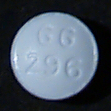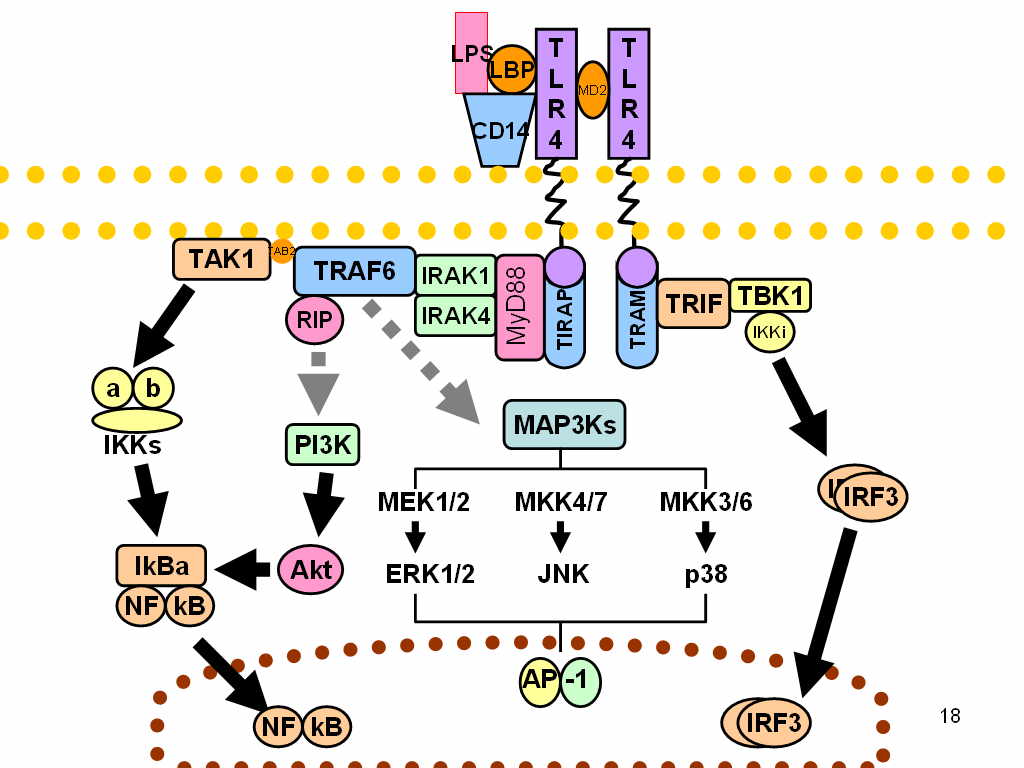|
Benzocycloheptenes
Benzocycloheptenes are cycloheptenes with additional benzene rings attached. Most have two benzene rings, and are called dibenzocycloheptenes. Some benzocycloheptenes and substituted benzocycloheptenes have medical uses as antihistamines, anticholinergics, antidepressants, and antiserotonergics. Examples include: * Antihistamines and Antiserotonergics ** Azatadine ** Desloratadine ** Loratadine ** Rupatadine ** Cyproheptadine ** Ketotifen ** Pizotifen * Anticholinergics ** Deptropine * Anticonvulsants ** Oxitriptyline * Antidepressants and Anticholinergics ** Amineptine ** Amitriptyline ** Nortriptyline ** Noxiptyline ** Octriptyline ** Protriptyline * Various ** Cyclobenzaprine ** Intriptyline See also * Toll-like receptor 4 Toll-like receptor 4 is a protein that in humans is encoded by the ''TLR4'' gene. TLR4 is a transmembrane protein, member of the toll-like receptor family, which belongs to the pattern recognition receptor (PRR) family. Its activation leads to a ... [...More Info...] [...Related Items...] OR: [Wikipedia] [Google] [Baidu] |
Pizotifen
Pizotifen (INN) or pizotyline (USAN), trade name Sandomigran, is a benzocycloheptene-based drug used as a medicine, primarily as a preventive to reduce the frequency of recurrent migraine headaches. Uses The main medical use for pizotifen is for the prevention of migraine and cluster headache. Pizotifen is one of a range of medications used for this purpose, other options include propranolol, topiramate, valproic acid, cyproheptadine and amitriptyline. While pizotifen is effective in adults, evidence of efficacy in children is limited, and its use is limited by side effects, principally drowsiness and weight gain, and it is usually not the first choice medicine for preventing migraines, instead being used as an alternative when other drugs have failed to be effective. It is not effective in relieving migraine attacks once in progress. Pizotifen has also been reported as highly effective in a severe case of erythromelalgia, a rare neurovascular disease that is sometimes refractory ... [...More Info...] [...Related Items...] OR: [Wikipedia] [Google] [Baidu] |
Intriptyline
Intriptyline is a tricyclic antidepressant (TCA) that was never marketed. See also * Benzocycloheptenes * Cyclobenzaprine * Tricyclic antidepressant Tricyclic antidepressants (TCAs) are a class of medications that are used primarily as antidepressants, which is important for the management of depression. They are second-line drugs next to SSRIs. TCAs were discovered in the early 1950s and wer ... References Tricyclic antidepressants Alkyne derivatives Dibenzocycloheptenes Abandoned drugs {{nervous-system-drug-stub ... [...More Info...] [...Related Items...] OR: [Wikipedia] [Google] [Baidu] |
Octriptyline
Octriptyline (SC-27,123) is a tricyclic antidepressant Tricyclic antidepressants (TCAs) are a class of medications that are used primarily as antidepressants, which is important for the management of depression. They are second-line drugs next to SSRIs. TCAs were discovered in the early 1950s and wer ... (TCA) that was never marketed. See also * Benzocycloheptenes References Tricyclic antidepressants Cyclopropanes {{nervous-system-drug-stub ... [...More Info...] [...Related Items...] OR: [Wikipedia] [Google] [Baidu] |
Oxitriptyline
Oxitriptyline (BS-7679) is an anticonvulsant of the tricyclic family which was never marketed. See also * Carbamazepine * Eslicarbazepine * Oxcarbazepine Oxcarbazepine, sold under the brand name Trileptal among others, is a medication used to treat epilepsy. For epilepsy it is used for both focal seizures and generalized seizures. It has been used both alone and as add-on therapy in people with ... * Benzocycloheptenes References {{Tricyclics Acetamides Anticonvulsants Dibenzocycloheptenes Abandoned drugs ... [...More Info...] [...Related Items...] OR: [Wikipedia] [Google] [Baidu] |
Desloratadine
Desloratadine (trade names Clarinex and Aerius) is a tricyclic H1 inverse agonist that is used to treat allergies. It is an active metabolite of loratadine. It was patented in 1984 and came into medical use in 2001. Medical uses Desloratadine is used to treat allergic rhinitis, nasal congestion and chronic idiopathic urticaria (hives). It is the major metabolite of loratadine and the two drugs are similar in safety and effectiveness. Desloratadine is available in many dosage forms and under many trade names worldwide. An emerging indication for desloratadine is in the treatment of acne, as an inexpensive adjuvant to isotretinoin and possibly as maintenance therapy or monotherapy. Side effects The most common side-effects are fatigue (1.2%), dry mouth (3%), and headache (0.6%). Interactions Co-administration with erythromycin, ketoconazole, azithromycin, fluoxetine or cimetidine resulted in elevated blood plasma concentrations of desloratadine and its metabolite 3-h ... [...More Info...] [...Related Items...] OR: [Wikipedia] [Google] [Baidu] |
Loratadine
Loratadine, sold under the brand name Claritin among others, is a medication used to treat allergies. This includes allergic rhinitis (hay fever) and hives. It is also available in combination with pseudoephedrine, a decongestant, known as loratadine/pseudoephedrine. It is taken orally. Common side effects include sleepiness, dry mouth, and headache. Serious side effects are rare and include allergic reactions, seizures, and liver problems. Use during pregnancy appears to be safe but has not been well studied. It is not recommended in children less than two years old. It is in the second-generation antihistamine family of medication. Loratadine was patented in 1980 and came to market in 1988. It is on the World Health Organization's List of Essential Medicines. Loratadine is available as a generic medication. In the United States, it is available over the counter. In 2020, it was the 73rd most commonly prescribed medication in the United States, with more than 9million prescr ... [...More Info...] [...Related Items...] OR: [Wikipedia] [Google] [Baidu] |
Amitriptyline
Amitriptyline, sold under the brand name Elavil among others, is a tricyclic antidepressant primarily used to treat cyclic vomiting syndrome (CVS), major depressive disorder and a variety of pain syndromes from neuropathic pain to fibromyalgia to migraine and tension headaches. Due to the frequency and prominence of side effects, amitriptyline is generally considered a second-line therapy for these indications. The most common side effects are dry mouth, drowsiness, dizziness, constipation, and weight gain. Of note is sexual dysfunction, observed primarily in males. Glaucoma, liver toxicity and abnormal heart rhythms are rare but serious side effects. Blood levels of amitriptyline vary significantly from one person to another, and amitriptyline interacts with many other medications potentially aggravating its side effects. Amitriptyline was discovered in the late 1950s by scientists at Merck and approved by the US Food and Drug Administration (FDA) in 1961. It is on th ... [...More Info...] [...Related Items...] OR: [Wikipedia] [Google] [Baidu] |
Toll-like Receptor 4
Toll-like receptor 4 is a protein that in humans is encoded by the ''TLR4'' gene. TLR4 is a transmembrane protein, member of the toll-like receptor family, which belongs to the pattern recognition receptor (PRR) family. Its activation leads to an intracellular signaling pathway NF-κB and inflammatory cytokine production which is responsible for activating the innate immune system. TLR4 expressing cells are myeloid (erythrocytes, granulocytes, macrophages) rather than lymphoid (T-cells, B-cells, NK cells). Most myeloid cells also express high levels of CD14, which facilitates activation of TLR4 by LPS. It is most well known for recognizing lipopolysaccharide (LPS), a component present in many Gram-negative bacteria (e.g. ''Neisseria'' spp.) and selected Gram-positive bacteria. Its ligands also include several viral proteins, polysaccharide, and a variety of endogenous proteins such as low-density lipoprotein, beta-defensins, and heat shock protein. Palmitic acid and lauric acid ar ... [...More Info...] [...Related Items...] OR: [Wikipedia] [Google] [Baidu] |
Cyclobenzaprine
Cyclobenzaprine (sold under the brand name Flexeril, among others) is a medication used for muscle spasms from musculoskeletal conditions of sudden onset. It is not useful in cerebral palsy. It is taken by mouth. Use is not recommended for more than a few weeks. Common side effects include headache, feeling tired, dizziness, and dry mouth. Serious side effects may include an irregular heartbeat. There is no evidence of harm in pregnancy, but it has not been well studied in this population. It should not be used with an MAO inhibitor. How it works is unclear. Cyclobenzaprine was approved for medical use in the United States in 1977. It is available as a generic medication. In 2020, it was the 39th most commonly prescribed medication in the United States, with more than 16million prescriptions. It was not available in the United Kingdom as of 2012. Medical use Cyclobenzaprine is used, in conjunction with physical therapy, to treat muscle spasms that occur because of acute m ... [...More Info...] [...Related Items...] OR: [Wikipedia] [Google] [Baidu] |
Protriptyline
Protriptyline, sold under the brand name Vivactil among others, is a tricyclic antidepressant (TCA), specifically a secondary amine, indicated for the treatment of depression and attention-deficit hyperactivity disorder (ADHD). Uniquely among most of the TCAs, protriptyline tends to be energizing instead of sedating, and is sometimes used for narcolepsy to achieve a wakefulness-promoting effect. TCAs including protriptyline are also used to reduce the incidence of recurring headaches such as migraine, and for other types of chronic pain. Medical uses Protriptyline is used primarily to treat depression and to treat the combination of symptoms of anxiety and depression.DURAMED PHARMACEUTICALS, INC., . (Ed.). (2007). Protriptyline drug facts. Pomona, New York : Barr Pharmaceuticals, Inc. Like most antidepressants of this chemical and pharmacological class, protriptyline has also been used in limited numbers of patients to treat panic disorder, obsessive-compulsive disorder, atte ... [...More Info...] [...Related Items...] OR: [Wikipedia] [Google] [Baidu] |
Noxiptyline
Noxiptiline (brand names Agedal, Elronon, Nogedal), also known as noxiptyline and dibenzoxine, is a tricyclic antidepressant (TCA) that was introduced in Europe in the 1970s for the treatment of depression. It has imipramine-like effects, acting as a serotonin and norepinephrine reuptake inhibitor, among other properties. Of the TCAs, noxiptiline has been described as one of the most effective, rivaling amitriptyline in clinical efficacy. Synthesis Ths synthesis is similar to that for Demexiptiline. The condensation of dibenzosuberone (1) with hydroxylamine Hydroxylamine is an inorganic compound with the formula . The material is a white crystalline, hygroscopic compound.Greenwood and Earnshaw. ''Chemistry of the Elements.'' 2nd Edition. Reed Educational and Professional Publishing Ltd. pp. 431–43 ... (2) gives the corresponding oxime 785-74-6(3). This is then reacted with 2-(dimethylamine)ethyl chloride 584-46-7(4). References Dibenzocycloheptenes Dimethylamino ... [...More Info...] [...Related Items...] OR: [Wikipedia] [Google] [Baidu] |
Amineptine
Amineptine, formerly sold under the brand name Survector among others, is an atypical antidepressant of the tricyclic antidepressant (TCA) family. It acts as a selective and mixed dopamine reuptake inhibitor and releasing agent, and to a lesser extent as a norepinephrine reuptake inhibitor. Amineptine was developed by the French Society of Medical research in the 1960s. Introduced in France in 1978 by the pharmaceutical company Servier, amineptine soon gained a reputation for abuse due to its short-lived, but pleasant, stimulant effect experienced by some patients. After its release into the European market, cases of hepatotoxicity emerged, some serious. This, along with the potential for abuse, led to the suspension of the French marketing authorization for Survector in 1999. Amineptine was never approved by the U.S. Food and Drug Administration (FDA) for marketing in the United States, meaning that it is not legal to market or sell amineptine for any medical uses in the U.S ... [...More Info...] [...Related Items...] OR: [Wikipedia] [Google] [Baidu] |



